
 Ashley C. Williams is the middle section of last year’s family feel-good hit, The Human Centipede.
Ashley C. Williams is the middle section of last year’s family feel-good hit, The Human Centipede.
FLICK ATTACK: First, the obvious question: Should I let Centipede writer/director Tom Six babysit my kids?
WILLIAMS: Sure thing! He’s a sweetheart. Most people just think he is sick in the head, which is understandable. But he really is the opposite of what you think!
FLICK ATTACK: When you signed up for The Human Centipede, did you have any idea it would become a pop-culture touchstone before it was even released, or did you think it was destined for oblivion?
WILLIAMS: Honestly, I had no idea it would be this big a hit in the cult horror film world. I just thought, “Hey, this role could either make or break my career,” and hey, it turned out pretty good! We were just happy when it got into some film festivals and it just kept growing from there!
FLICK ATTACK: In The Brady Bunch, Jan Brady always resented being the middle girl. Can you relate? Do you think you had it worse than she did? Please remember before you answer that Marcia was really hot.
WILLIAMS: I can relate! And ironically, I am the “middle child” in my family, too, and it’s not the greatest feeling. But I do think that my character definitely had it the worst.
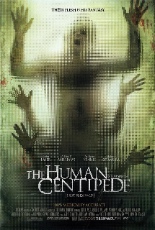 FLICK ATTACK: Do you now need knee replacements?
FLICK ATTACK: Do you now need knee replacements?
WILLIAMS: My knees are fine, thanks. But I suppose my character, Lindsay, might need them, if she survives.
FLICK ATTACK: Since you spent so much time attached to two of your co-stars, did you get to the point where you could finish each other’s thoughts? And, like, if Ashlynn Yennie stubbed her toe right now on the other side of the country, could you feel it?
WILLIAMS: Totally.
FLICK ATTACK: How to put this delicately? Okay, there’s no way to put this delicately: Were you having to smell Akihiro Kitamura’s butt the whole time?
WILLIAMS: Nope, there were several layers of fabric and gauze so that we wern’t ever touching. We were never ever skin to skin. There was a knob attached to the gauze that we bit down on to make it look like we were attached.
FLICK ATTACK: I imagine that since the movie came out, you’ve gotten a lot of attention from the wrong sort of people. What’s the creepiest fan experience you’ve had thus far?
WILLIAMS: Creepiest? Well, I get a lot of Facebook stalkers, especially on my fan page. They say some weird crap that is just … well … weird.
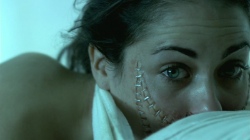 FLICK ATTACK: Speaking of, has appearing in the film affected your dating life?
FLICK ATTACK: Speaking of, has appearing in the film affected your dating life?
WILLIAMS: Not at all! my boyfriend was very supportive of me doing this film.
FLICK ATTACK: According to IMDb, you were an uncredited villager in Willow. If that’s true, who’s scarier: an on-camera Dieter Laser or an off-camera Val Kilmer?
WILLIAMS: Well, I was only 5 years old in Willow, so I’m not sure of Val Kilmer’s personality off-camera, so I would have to say definitely Dieter Laser was insanely scary, even while he was off-camera! He stayed in character pretty much the whole time while he was on set.
FLICK ATTACK: You’ve won acting awards, you’re a professional dancer, you’re an accomplished painter. Does it bug you — no pun intended — that your obituary still might lead with The Human Centipede?
WILLIAMS: Well, let me correct some things before I answer. I am actually not a dancer; I am a singer and I paint as a hobby. I’m actually very proud of the work I did in The Human Centipede. Being known as “the middle piece” my whole life is nice, but obviously, I would like to work outside of the horror genre as well and not get “stuck” in it.
FLICK ATTACK: And now for a question not about The Human Centipede: What films are you working on now? And how medically accurate are they?
WILLIAMS: Right now, I will be shooting a a romantic comedy in August here in NYC called A Guy Named Rick, and then going off to England and Germany to shoot a horror comedy, which is “somewhat accurate” in a Shaun of the Dead kind of way, called Stagnant. I have some offers of some great films that I am in negotiations with at the moment, and I continue to do plays here in NYC! —Rod Lott
Additional questions by Allan Mott.

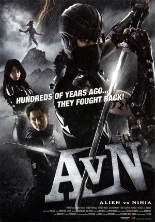
 And now for a title that tells you everything you need to know: There’s an alien. There’s ninja. They fight.
And now for a title that tells you everything you need to know: There’s an alien. There’s ninja. They fight. But to address what comes before: The alien does look a little H.G. Giger-esque, although it’s clearly just a guy in a rubber suit. They took no effort to slime it up, but did craft its head to make it resemble the creature from the real
But to address what comes before: The alien does look a little H.G. Giger-esque, although it’s clearly just a guy in a rubber suit. They took no effort to slime it up, but did craft its head to make it resemble the creature from the real 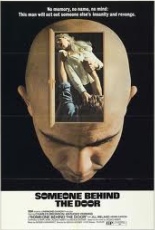
 After so much post-
After so much post-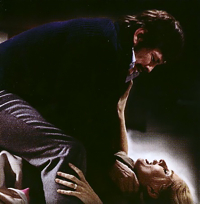 That’s the snazzy way of saying, “I’m going to make you think that my wife is really your wife, and then tell you that she’s been nailing some dude that isn’t me — er, you — and that you should do something about it, thereby letting me off the hook.” Oooooh, Mrs. Jeffries (Jill Ireland, of course), you are in troubbbbble!
That’s the snazzy way of saying, “I’m going to make you think that my wife is really your wife, and then tell you that she’s been nailing some dude that isn’t me — er, you — and that you should do something about it, thereby letting me off the hook.” Oooooh, Mrs. Jeffries (Jill Ireland, of course), you are in troubbbbble! 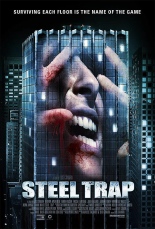
 In Japan,
In Japan, 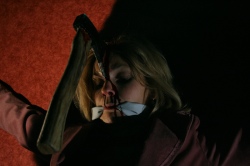 The table’s place settings sport not only the guests’ names, but unofficial titles like “Loser,” “Heartless” and “Two-Faced,” yet they don’t see anything wrong with that. The clues are given in nursery rhymes, yet they aren’t the least bit creeped out by them. The first one takes them to a disembodied pig’s head wearing a crown, yet they keep on going.
The table’s place settings sport not only the guests’ names, but unofficial titles like “Loser,” “Heartless” and “Two-Faced,” yet they don’t see anything wrong with that. The clues are given in nursery rhymes, yet they aren’t the least bit creeped out by them. The first one takes them to a disembodied pig’s head wearing a crown, yet they keep on going.